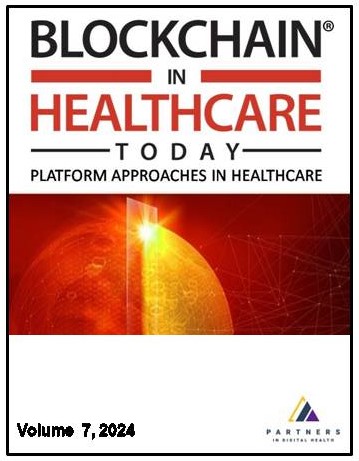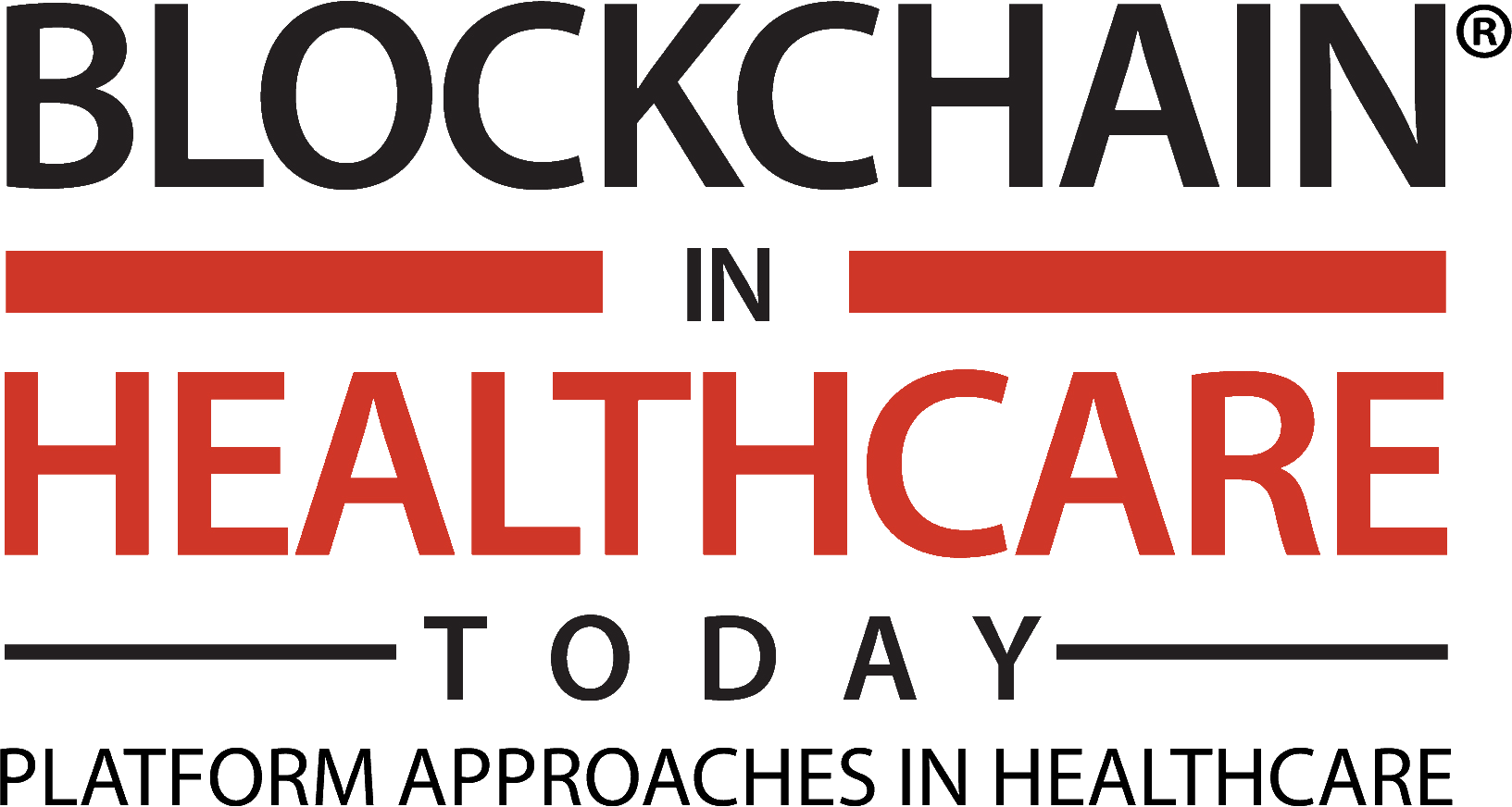Current issue

Volume 7, Issue 3, 2024
Online ISSN: 2573-8240
Volume 7 , Issue 3, (2024)
Published: 16.12.2024.
Open Access
Blockchain in Healthcare Today (BHTY) is the leading international open access journal that amplifies and disseminates platform approaches in healthcare and distributed ledger technology research and innovations. Fields of interest include healthcare information systems, leveraging data science tools and techniques, interoperability, consent mechanisms, privacy preservation, security of health data, clinical trials management, supply chain management, revenue cycle automation, immersive technologies, tokenomics, governance, regulation, network technologies, clinical computing, cryptography, and failed experiments in this expanding specialty field of research.
All issues
Contents
21.10.2022.
Discussion
Blockchain predictions for health care in 2021
With coronavirus (COVID) spreading across the world and the health care system being pushed toward more digitization and technology, last year was a unique year of human tragedy. There is a silver lining to this tragedy, that is, providers, payers, and pharma companies have shifted quickly toward better technologies, including artificial intelligence (AI) blockchain, and so on.
Prasad Kothari, Melanie Nuce, Ingrid Vasiliu-Feltes, Dominique Hurley, Mercury Fox, Sweta Sneha, Wendy Charles, Jim Nasr, Radhika Iyengar
21.10.2022.
Research Articles
Leveraging the Hyperledger Fabric for Enhancing the Efficacy of Clinical Decision Support Systems
Adopting and implementing the Clinical Decision Support System (CDSS) technology is a critical element in an effort to improve national quality initiatives and evidence-based practice at the point of care. CDSS is envisioned to be a potential solution to many current challenges in the healthcare sphere, which includes information overload, practice improvement, eliminating treatment errors, and reducing medical consultation costs. However, the CDSS did not manage to achieve these goals to the desired levels and provide context-appropriate alerts, although integrated with the electronic health records (EHRs) (1). Clinical decision support alerts can save lives, but frequent ones can cause increased cognitive burden to clinicians, worsen alert fatigue, and increase the duplication of tests. This ultimately increases health care costs without refining patient outcomes. Studies show that 49–96% of clinical alerts are ignored, raising questions about the effectiveness of CDSS (1). Blockchain, a decentralized, distributed digital ledger that contains a plethora of continuously updated, time-stamped, and highly encrypted virtual record, can be a key to addressing these challenges (2). The blockchain technology if integrated with the CDSS can serve as a potential solution to eliminating current drawbacks with CDSS (3). This article addresses the most significant and chronic problems facing the successful implementation of CDSS and how leveraging the Hyperledger Fabric can alleviate the clinical alert fatigue and reduce physician’s burnout using patient-specific information. The proposed architecture framework for this study is designed to equip the CDSS with overall patient information at the point of care. This then empowers the physicians with the blockchain-integrated CDSS, which holds the potential to reduce clinician’s cognitive burden, medical errors, and costs and ultimately enhance patient outcomes. The research study broadly discusses how the blockchain technology can be a potential solution, reasons for selecting the Hyperledger Fabric, and elaborates on how the Hyperledger Fabric can be leveraged to enhance the efficacy of CDSS.
Ramya Gangula, Sri Varun Thalla, Ijeoma Ikedum, Chineze Okpala, Sweta Sneha
21.10.2022.
Use Cases
OpenPharma Blockchain on FHIR: An Interoperable Solution for Read-Only Health Records Exchange through Blockchain and Biometrics
The healthcare system in the United States is unique. From payor to provider, patients have the freedom of choice. This creates a complicated and profitable paradigm of care. Legislation defines government expectations of data exchange; however, the methods are left to the discretion of the stakeholders. Today, devices and programs are not built to unified standards, thus they do not share data easily. This communication between software is known as interoperability. We address the health data interoperability by leveraging Fast Health Interoperable Resource (FHIR) standard, a viewer of FHIR called OpenPharma, and Blockchain technology. Our proof of concept, called “OpenPharma Blockchain on FHIR” (OBF), is interoperable by design and grants clinicians access to patient records using a combination of data standards, distributed applications, patient-driven identity management, and the Ethereum blockchain. OBF is a trustless, secure, decentralized, and vendor-independent method for information exchange. It is easy to implement and places the control of records with the patients.
Gracie Carter, Ben Chevellereau, Hossain Shahriar, Sweta Sneha
04.01.2019.
Technical Briefs & Reports
Voice Biometrics and Blockchain: Secure Interoperable Data Exchange for Healthcare
PURPOSE
The healthcare system in the United States is unique. From payor to provider, patients have many choices but they lack in the ability to manage or share their health information. This complicated care paradigm places patients at a distinct disadvantage. Legislation clearly defines government expectations of data availability but not how to achieve exchange. Because methods of sharing are left to the discretion of care providers and software vendors, non-interoperability is the standard.
METHODS
The OpenPharma Blockchain on Fast Healthcare Interoperability Resources (FHIR) (OBF) solution is interoperable by design. OBF empowers patients with data access through biometric identity authentication, blockchain, and machine-–to-machine secure data access. OBF provides authenticated users read-only, real-time access to patient records using the healthcare interoperability standard HL7 FHIR. OBF is built around a modern, browser-based user interface, blockchain technologies (leveraging either Ethereum or the Hedera protocols) and modular, modern software exposed as Application Programming Interfaces (APIs). This allows OBF to meet the Office of National Coordinator for Health Information (ONC) metrics, which include sending, receiving, and finding information from outside sources and using that information to make informed clinical decisions without additional burden on clinicians or patients.
RESULTS
Building on the HL7 FHIR application community practices, OBF is a SMART-on-FHIR plug-in for Electronic Medical Record (EMR) systems. Using OBF, patients can identify themselves and gain access to their medical records using their voice. This unique feature is accomplished through the Saavha voice print biometrics technology. Saavha returns a unique member ID that is passed directly to the OBF blockchain smart contract for storage and interoperable patient record access (the ID does not contain public health information [PHI]).
To ensure complete privacy, all information is passed through multiple layers of encryption where no keys are stored locally. Additionally, no PHI is shared to the blockchain. To ensure privacy, OBF creates a new encrypted address for the FHIR patient record object, using the Saavha generated member ID as the unique identifier. This encrypted address is then published on chain, making it available to participating providers. Providers must register their relationships to patients before OBF will permit online viewing of patient records. Patient record access is accomplished through voice verification and real-time surfacing of encrypted patient data through the OBF FHIR Viewer.
CONCLUSIONS
OBF is a lightweight, flexible, secure, and stable interoperable solution that places data stewardship with patients. Using industry-wide data standards, biometrics, Smart contracts, Ethereum, and OpenPharma’s data viewer for the first-time patients can authorize read-only record exchange using their voice.
Benjamin Chevallereau, Gracie Carter, Sweta Sneha
04.01.2019.
Narrative/Systematic Review/Meta-Analysis
Toward Application of Blockchain for Improved Health Records Management and Patient Care
Technological advancements have proven to be indispensable for improving patient care, yet they continue to present a host of problems. One of the most pressing concerns is how to improve quality of care while controlling costs. Beyond clinical care, one plausible solution is to share patient information freely and efficiently. Hospitals and clinics may share data internally, but external information sharing remains an issue. Despite the digitization of medical records, there remains a lack of adequate computing infrastructure or unwillingness to share data among providers. Care quality often suffers as a result. Implementing a type of peer-to-peer distributed digital technology, known as a blockchain, to record and transmit transactional data could be a solution to these concerns. Originally, blockchain was developed to record cryptocurrency transactions. However, as blockchain technologies have matured and adopted across dissimilar industries, the feasibility of possible applications of blockchain technology in healthcare is getting more attention. This article explores possible opportunities of adoption of blockchain technology to improve patient data security, privacy, and care while outlining the challenges that practitioners may encounter.
Gracie Carter, Denise White, Anusha Nalla, Hossain Shahriar, Sweta Sneha
